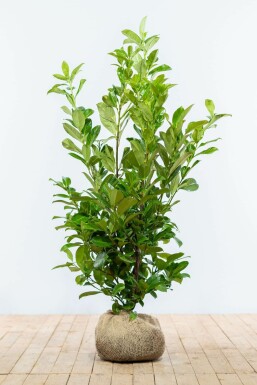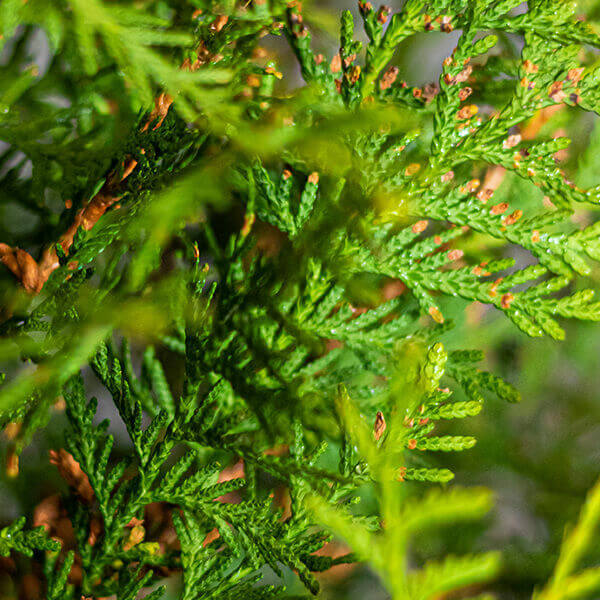Hedging Plants For Mediterranean Gardens
Hedging Plants For Mediterranean Gardens
Blog Article
Hedge Plants For Sound Barriers
Enhance your garden's attraction with lavish hedge ranges such as Yew (Taxus), Thuja, Laurel, Photinia, and Bamboo, commemorated for their structural integrity and environmental advantages.
Yew and Thuja offer evergreen protection and winter durability, while Laurel uses fast growth and broad, aromatic leaves.
Photinia adds seasonal appeal with its vibrant red foliage, and Bamboo provides a low-maintenance, serene ambiance.
These hedges enhance air quality, lower noise, and develop tranquil, personal spaces.
Appropriate planting, spacing, and upkeep make sure vigorous growth and eco-friendly harmony.
Explore how these rich ranges can raise your garden's beauty and well-being.
Key Takeaways
Change Your Garden With Lush Hedge Ranges
- Select Yew for its thick, evergreen growth and unrivaled durability.
- Go with Laurel for its quick growth and broad leaves, guaranteeing quick personal privacy.
- Pick Photinia for its lively seasonal foliage, which turns a striking dark red.
- Utilize Bamboo for a low-maintenance, winter-hardy hedge with aesthetic appeal.
- Space plants 2-3 per meter and prune regularly for ideal growth and health.
Popular Hedge Plants
When transforming a garden with rich hedge varieties, it's important to think about popular hedge plants such as Yew, Thuja, Laurel, and Photinia due to their special qualities and advantages.
Yew (Taxus) is highly esteemed for its longevity and dense, green growth, making it a prime choice for enduring landscapes.
Thuja is noted for its evergreen foliage and robust winter season resilience.
Photinia includes seasonal vibrancy with red leaves that darken in time, producing vibrant visual appeal.
Laurel provides fast growth and fragrant, broad leaves, ideal for quick personal privacy.
In Addition, Bamboo is an excellent option for atmosphere, providing a low-maintenance, winter-hardy choice that enhances the garden's visual with its sophisticated, swaying walking sticks.
These selections cater to a range of horticultural requirements and preferences.
Benefits of Garden Hedges
Garden hedges use a plethora of advantages, making them a valuable addition to any landscape. These natural barriers are cost-effective to carry out and offer significant wind defense, improving air circulation and adding to noise reduction. The thick foliage of hedges like Thuja and Beech ensures personal privacy by blocking visibility, developing a peaceful and secluded environment.
Hedges likewise play an essential function in microclimate policy, supplying a stable environment that cultivates plant growth and minimizes temperature level fluctuations. Their complex leaf structures filter pollutants, enhancing air quality and adding to a healthier garden environment.
Moreover, hedges master noise reduction, soaking up and deflecting acoustic waves to lower ambient noise levels. This double functionality of offering both acoustic and visual privacy improves the total tranquility and visual appeal of any garden.
Planting and Maintenance Tips
For an effective hedge, careful preparation of the planting area is important. Ensure the soil has correct pH and drainage to support strong root development.
Area the plants properly for the chosen species. Water the hedge often during its initial growth phase, adjusting as needed with seasonal modifications.
Implement a organized pest control and disease prevention method, utilizing chemical or organic treatments when needed. Frequently inspect for aphids, mites, and fungal infections.
Apply mulch to keep wetness and reduce weeds. Seasonal pruning promotes thick development and air circulation, important for plant health.
Following these guidelines will help you cultivate a vibrant, well-kept hedge that improves the appeal of your garden.
Spacing and Cutting Standards
Spacing and Cutting Standards
Correct spacing and cutting are crucial for cultivating healthy, visually appealing hedges. Adequate spacing ensures each plant receives enough nutrients, light, and air flow.
Follow these standards for optimum hedge upkeep:
- Spacing: Position hedge plants 2-3 plants per meter to encourage robust development.
- Pruning Strategies: Routine pruning is essential for maintaining wanted hedge height and shape. Cut brand-new development in summertime and cut back older wood during winter.
- Seasonal Care: Adjust cutting schedules and approaches according to seasonal requirements to guarantee plant health.
- Hedge Height: Routinely screen and trim to keep the wanted hedge height and accomplish consistent looks.
Sticking to these steps will ensure your hedge grows, improving both the appeal and functionality of your garden.
Choosing the Right Hedge
Picking the Right Hedge
Picking the proper hedge includes assessing factors such as mature height, foliage density, and environmental resilience. Effective hedge plant selection needs comprehending each species' development attributes and site-specific versatility.
For instance, Yew (Taxus) provides excellent durability and hedging plants dense development, while Thuja is notable for its winter season strength. Furthermore, considering upkeep requirements is crucial; fast-growing types like Laurel or Privet demand regular cutting, whereas low-maintenance choices like Bamboo or Ivy may be more suitable for those looking for minimal maintenance.
Environmental factors such as soil type, light schedule, and moisture conditions ought to likewise guide the selection procedure. This careful technique guarantees the chosen hedges will grow, offering both functional and visual benefits to the garden landscape.
Shipment and Planting Advice
To ensure your hedge plants thrive, they ought to be delivered by specialized couriers and planted without delay upon arrival.
Follow these essential steps for successful planting:
- Soil Preparation: Enhance the soil with raw material to improve drain and nutrient material.
- Planting Depth: Create a trench two times the width and equivalent to the depth of the root ball.
- Watering Strategies: Water completely after planting, keeping the soil regularly damp but not saturated.
- Mulching: Use a layer of mulch to keep moisture and suppress weeds.
Consumer Support and Service
Given the crucial function of prompt help in horticultural pursuits, our customer support group is readily available 6 days a week through telephone, email, and social media to use professional guidance and promptly attend to any concerns. Their devotion to quick action times ensures consumer fulfillment by dealing with questions related to plant health, optimum planting methods, and upkeep schedules.

Response Time
-------------------
This extensive support group, enhanced by an outstanding 9.3/ 10 customer ranking, highlights our commitment to enhancing the gardening experience for every single client.
Frequently Asked Concerns
How Long Does It Consider Hedge Plants to Establish?
Hedge plants usually require one to 3 years to become totally established, with the specific duration differing by types and growing conditions.
Efficient care throughout this crucial duration is essential for robust development. Constant watering, vigilant weed control, and proper fertilizer application are essential in promoting strong root advancement.
For example, fast-growing species like Laurel may develop quicker, while slower-growing varieties such as Yew might take longer. Persistent maintenance accelerates the establishment procedure, resulting in healthy and dense hedges.
What Are the Finest Hedge Plants for Personal Privacy?
The question of the finest hedge plants for privacy involves examining evergreen and deciduous choices.
Evergreen hedges like Thuja, Laurel, and Cypress offer year-round protection, guaranteeing continuous personal privacy.
On the other hand, deciduous hedges such as Beech provide seasonal personal privacy, shedding leaves in chillier months.
Key maintenance pointers for privacy hedges consist of routine cutting, fertilizing in spring, and appropriate spacing-- generally 2 to 3 plants per meter.
Additionally, constant watering and persistent weed removal are vital for promoting healthy, thick growth.
Can Hedge Plants Draw In Wildlife to My Garden?
Yes, hedge plants can draw in wildlife to your garden by supplying essential advantages like shelter, food, and nesting websites, consequently improving local biodiversity. Yew, holly, and laurel are outstanding for drawing in birds, while ivy supports a variety of pests.
However, it's crucial to note that there are some downsides, such as increased maintenance to manage pests and regular maintenance. Carefully choosing and keeping hedge varieties can assist balance these drawbacks and advantages, eventually promoting a sustainable and dynamic ecosystem in your garden.
Are There Any Blooming Hedge Plants Available?
Yes, there are flowering hedge plants offered that can enhance the beauty of your garden.
For instance, Elaeagnus, likewise referred to as Olive Willow, produces fragrant white flowers in the fall, including a touch of sophistication.
Photinia, another popular choice, showcases lively red leaves that mature into an abundant green, developing a dynamic visual effect throughout the seasons.
To ensure these plants prosper, it's essential to practice appropriate pruning methods and seasonal upkeep, such as cutting brand-new development in the summer and cutting back in the winter.
These steps will assist preserve the health and visual appeal of your blooming hedges.
How Do I Avoid Bugs in My Hedge Plants?
To avoid bugs in hedge plants, use natural pest control methods and maintain proper hedge care. Introduce useful bugs like ladybugs, which take advantage of damaging bugs, to develop a balanced ecosystem.
Frequently inspect your hedges for indications of problem and without delay remove any afflicted parts to avoid the spread. Guarantee the health of your hedges by using balanced fertilizers and providing sufficient water.
Make use of mulching to retain soil moisture and appropriate spacing to decrease plant tension and promote robust development. These practices jointly assist in lessening pest problems and preserving a healthy hedge.
Conclusion
In essence, picking the ideal hedge ranges such as Yew, Thuja, and Laurel can change any garden into a relaxing haven. These plants provide year-round greenery, improve aesthetic appeal, and offer practical benefits like noise reduction and wind protection.
Proper planting techniques, precise spacing, constant watering, and seasonal cutting are crucial for ideal growth.
Trusted shipment services and professional customer support make sure a smooth experience from purchase to planting, making it simpler than ever to raise your outside space.
Garden hedges offer a plethora of advantages, making them a valuable addition to any landscape. These natural barriers are cost-effective to carry out and offer significant wind defense, improving air circulation and contributing to sound reduction. The thick foliage of hedges like Thuja and Beech guarantees privacy by blocking visibility, developing a serene and remote environment.

Pruning Strategies: Routine pruning is essential for keeping wanted hedge height and shape. Trim new development in summertime and cut back older wood during winter season.
Report this page